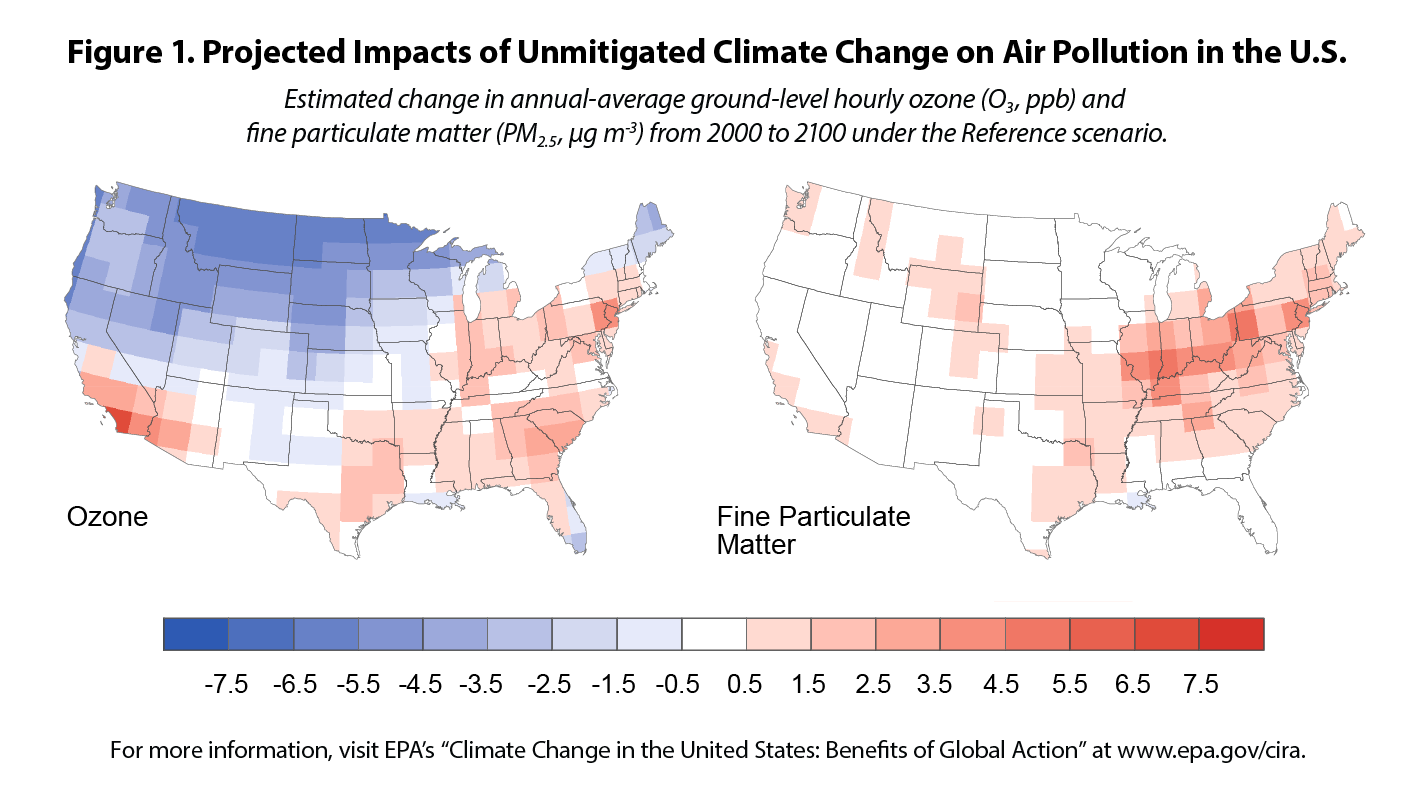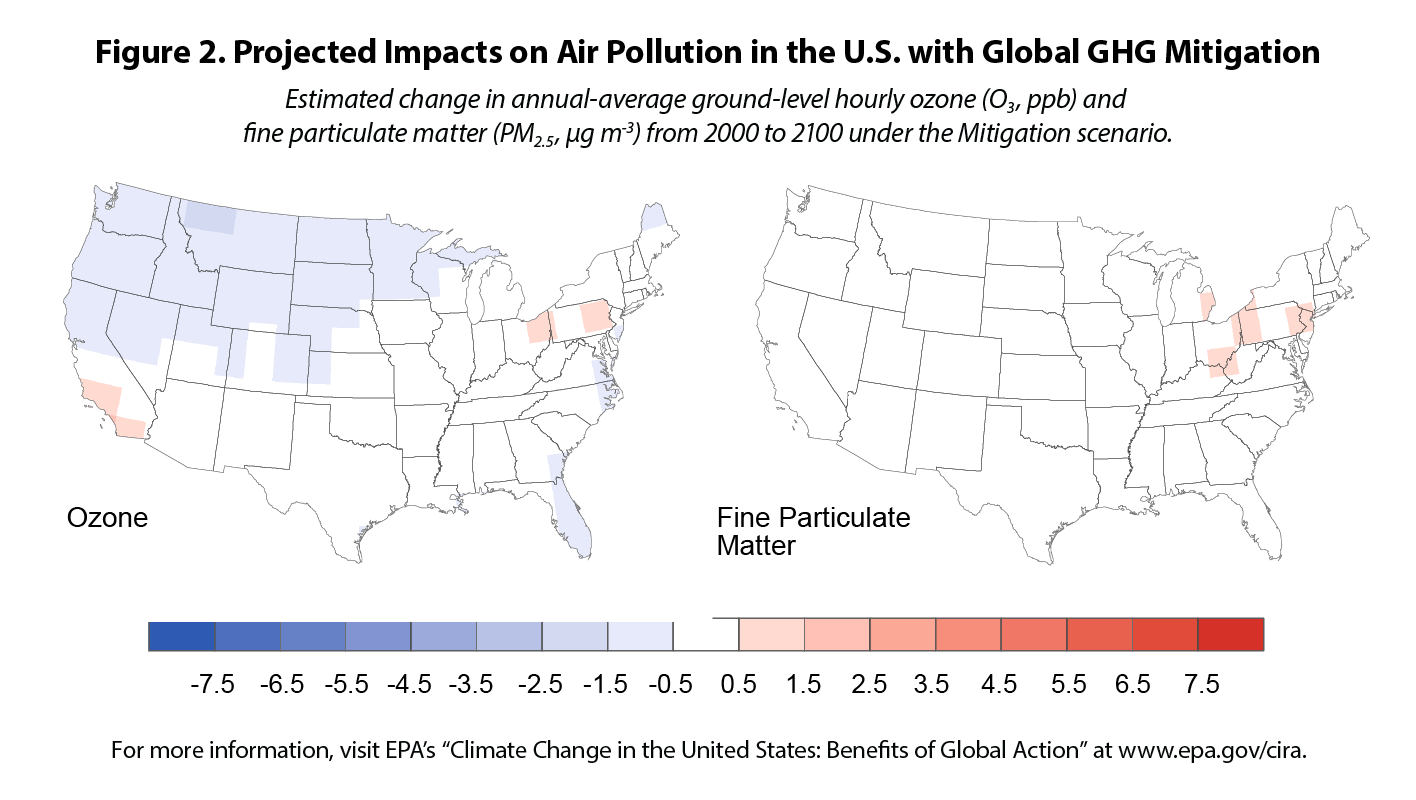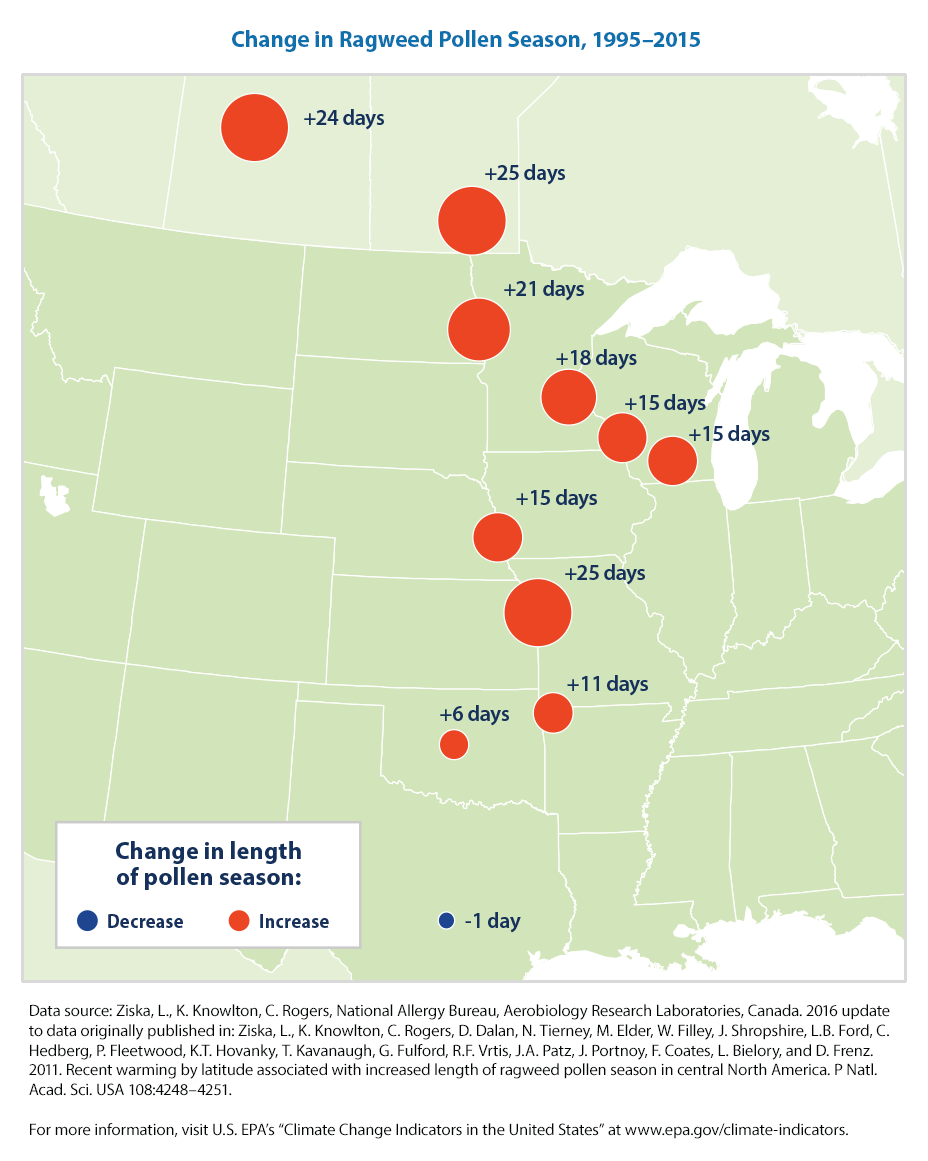
Did you know?
- Current levels of ground-level ozone have been estimated to be responsible for tens of thousands of hospital and emergency room visits, millions of cases of acute respiratory symptoms and school absence, and thousands of premature deaths each year in the US.
- Dampness and mold in US homes are linked to approximately 4.6 million cases of worsened asthma.
The quality of the air we breathe is sensitive to changes in climate and strongly dependent on the weather. Changes in temperatures, cloud cover, humidity, the frequency and intensity of precipitation, and wind patterns associated with a changing climate can all influence air quality through altering levels and location of outdoor air pollutants such as ground-level ozone (O3) and fine particulate matter. Increasing carbon dioxide levels also leads to earlier springs and longer growing seasons for many plants which increase the length and intensity of the pollen season in some part of the United States.
Increased temperatures, drought, and/or other disturbances from a changing climate also increases the frequency and intensity of naturally occurring emissions that influence air quality such as smoke from wildfires and wind-blown dust. Changes to outdoor air quality and aeroallergens also affect indoor air quality and can negatively affect human respiratory and cardiovascular systems. For example, increased humidity and precipitation can promote mold growth indoors and increase dust mites, bacteria, and other bio-contaminants.
Learn More:
Below, Figure 1 shows the projected impacts without global greenhouse gas (GHG) mitigation on air pollution in the US and Figure 2 shows the impacts with GHG mitigation.


The image below shows how the length of the pollen season changed at 11 locations in the central US and Canada between 1995 and 2015.

What you can do
Steps you can take to maintain healthy indoor air quality include improving ventilation, controlling moisture levels, reducing pollutants, and increasing energy efficiency.
- Learn more about how to reduce indoor pollution sources, improve ventilation, and lower the concentrations of indoor air pollutants in EPA's Improving Indoor Air Quality.
- Reduce exposure to asthma triggers by learning how to discover them.
- Discover the most important ways to protect your home from mold by touring the EPA's Mold House.
Sources:
- EPA. 2015. "Cliaate Action Benefits: Air Quality." Accessed August 30, 2016. https://www.epa.gov/cira/climate-action-benefits-air-quality
- Jacob, D., Winner, D. 2009. "Effect of Climate Change on Air Quality." Atmospheric Environment. 43(1): 51-63
- USGCRP. 2016. "Climate and Health Assessment: Air Quality Impacts." Accessed August 30. https://health2016.globalchange.gov/air-quality-impacts


